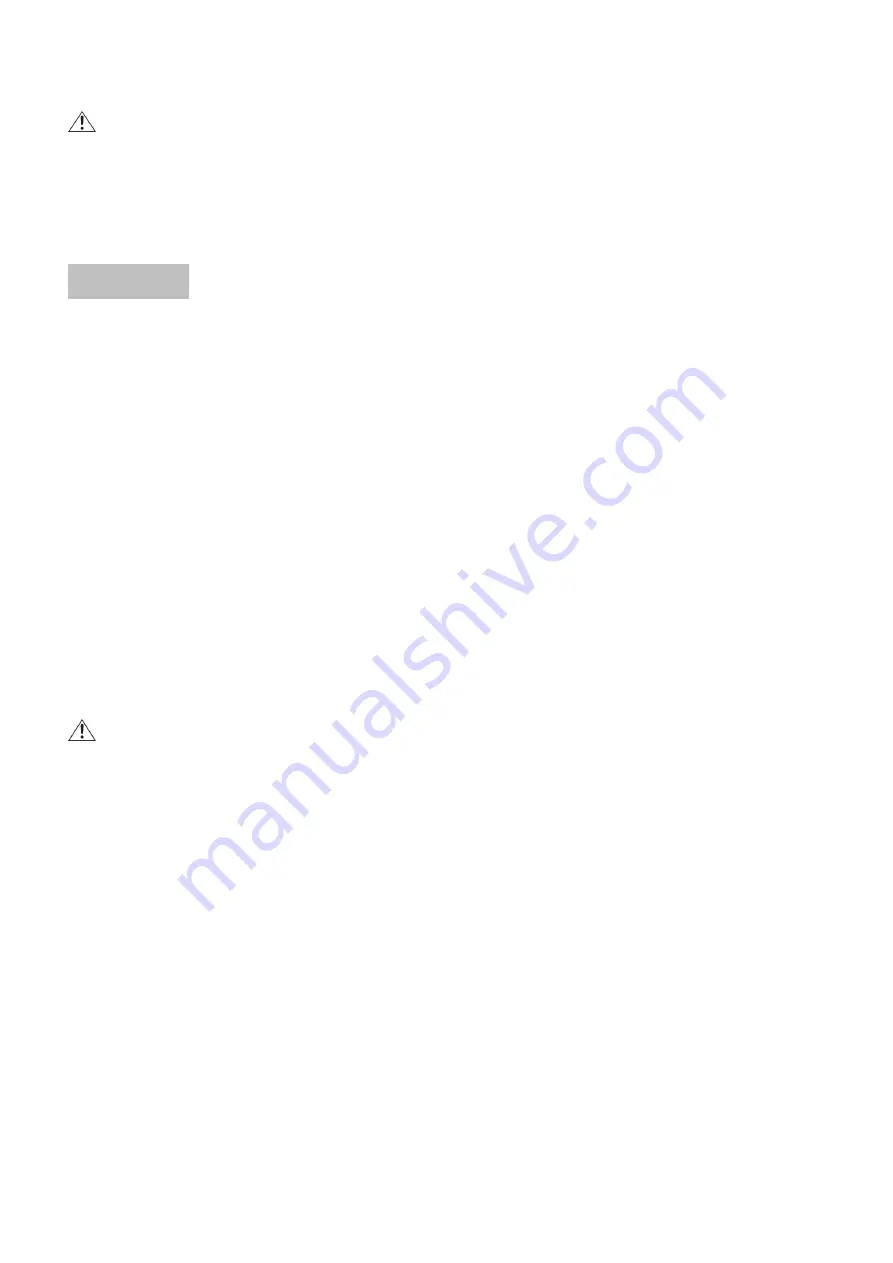
3 OF 6
4. DO NOT RUN DRY OVER 30 SECONDS.
ATTENTION!
Functioning under by-pass conditions is only allowed for brief periods of time (2-3minutes
maximum).
C4. FLUIDS PERMITTED
• Chemical products: Urea, weak acid & weak alkaline fluid etc.
• Water
D. MOVING AND TRANSPORT
Given the limited weight and size of the pumps (see overall dimensions), moving the pumps does not require
the use of lifting devices.
E. INSTALLATION
E1. DISPOSING OF THE PACKING MATERIAL
The packing material does not require special precautions, not being in any way dangerous or polluting.
Refer to local regulations for its disposal.
E2. PRELIMINARY INSPECTION
• Check that the machine has not suffered any damage during transport or storage.
• Clean the inlet and outlet openings, removing any dust or residual packing material.
• Make sure that the motor shaft turns freely.
• Check that the electrical specifications correspond to those shown on the identification plate.
ATTENTION!
THE MOTORS ARE NOT ANTI-EXPLOSIVE. Do not install them where inflammable vapours can be
present.
E3. CONNECTING
• Before connection, make sure that the tubing and the suction tank are free of dirt and thread residue that
could damage the pump and its accessories.
• Do not use conical threaded joints that could damage the threaded pump openings if excessively tightened.
Step 1: SUCTION HOSE:
-
Connect the 1.5M Suction hose by the Hose tail (#4) and Clamp (#2) to the inlet of the pump.
Step 2: DELIVERY HOSE:
-
Connect the 6M Delivery hose by the Hose tail (#4) and Clamp (#2) to the outlet of the pump or the flow
meter.
Step 3: NOZZLE
-
Connect the dispensing nozzle by the Clamp (#2) to the delivery hose.
E4. DISPENSING
After installation the completed pump system as picture indicated, connect the power supply, start dispensing.
PERMITTED
























